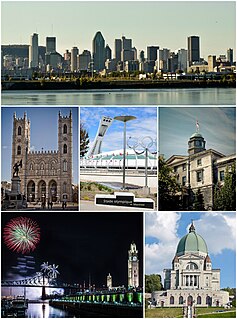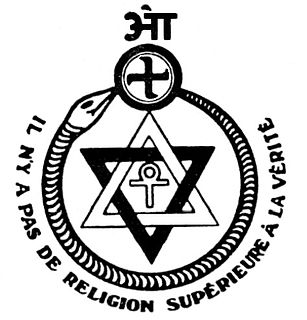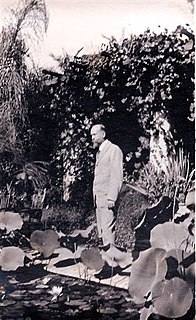This article may be expanded with text translated from the corresponding article in German. (November 2017)Click [show] for important translation instructions.
|
This article needs additional citations for verification .(January 2008) (Learn how and when to remove this template message) |

Robert Crosbie (10 January 1849 – 25 June 1919) was a theosophist and founder of the United Lodge of Theosophists (ULT).

The United Lodge of Theosophists or ULT is an informal and wholly voluntary association of students of Theosophy. It was founded in 1909, mainly through the efforts of Robert Crosbie. The first parent lodge of the ULT was started in Los Angeles by Robert Crosbie and seven other associates through the adoption of its Declaration on February 18, 1909. Owing largely to the revival efforts of B.P. Wadia after Crosbie's death, there are currently about twenty active lodges spread all over the world. The ULT is considered to be part of the second generation or the third section of the Theosophical Movement started in 1875 by H.P. Blavatsky in New York. Presently, it is also one of the existing four main "branches" of the original Theosophical Movement. The following founding principles when taken as a whole, sets apart the ULT from the other Theosophical Organizations:
Contents
Crosbie was born in Montreal, Lower Canada. In 1902, he moved to Lomaland, Point Loma, California where he helped in building a theosophical community. In 1908 he published a letter To all open-minded Theosophists about his thoughts on the Theosophical Society. On February 1909 he founded the ULT in Los Angeles. The organization had no presidents or hierarchical structures. Emphasizing the universality of theosophy, the Declaration of the United Lodge of Theosophists states in part:

Montreal is the most populous municipality in the Canadian province of Quebec and the second-most populous municipality in Canada. Originally called Ville-Marie, or "City of Mary", it is named after Mount Royal, the triple-peaked hill in the heart of the city. The city is centred on the Island of Montreal, which took its name from the same source as the city, and a few much smaller peripheral islands, the largest of which is Île Bizard. It has a distinct four-season continental climate with warm to hot summers and cold, snowy winters.

Lomaland was a Theosophical community located in Point Loma in San Diego, California from 1900 to 1942. Theosophical Society leader Katherine Tingley founded it in 1900 as a school, cultural center, and residential facility for her followers. The American headquarters of the Theosophical Society Pasadena was also situated there. The facility was important to the growing city of San Diego for its cultural offerings, and it left a lasting legacy in its campus which still retains many of the unique architectural features of the original Lomaland. The residents of Lomaland also transformed their Point Loma neighborhood by planting so many trees, orchards and shrubs that the formerly barren neighborhood is now known as the "Wooded Area".

California is a state in the Pacific Region of the United States. With 39.6 million residents, California is the most populous U.S. state and the third-largest by area. The state capital is Sacramento. The Greater Los Angeles Area and the San Francisco Bay Area are the nation's second- and fifth-most populous urban regions, with 18.7 million and 8.8 million residents respectively. Los Angeles is California's most populous city, and the country's second-most populous, after New York City. California also has the nation's most populous county, Los Angeles County, and its largest county by area, San Bernardino County. The City and County of San Francisco is both the country's second-most densely populated major city after New York City and the fifth-most densely populated county, behind only four of the five New York City boroughs.
"It regards as Theosophists all who are engaged in the true service of Humanity, without distinction of race, creed, sex, condition or organization,(...)" [1]
Much of the wording of the ULT Declaration is directly derived from statements found in the writings of William Q. Judge and H.P. Blavatsky. [2] The expressed mission statement of the United Lodge of Theosophists is “To spread broadcast the original teachings of Theosophy as recorded in the writings of H.P. Blavatsky and William Q. Judge.”
In 1912 Crosbie first published the theosophical magazine "Theosophy". He also founded Theosophy School. In 1916 two new lodges of the ULT were opened in San Francisco and Berkeley, California. The ULT exists to this day, as an international association with lodges and study groups presently in 16 nations around the world.

San Francisco, officially the City and County of San Francisco, is the cultural, commercial, and financial center of Northern California. San Francisco is the 13th-most populous city in the United States, and the fourth-most populous in California, with 884,363 residents as of 2017. It covers an area of about 46.89 square miles (121.4 km2), mostly at the north end of the San Francisco Peninsula in the San Francisco Bay Area, making it the second-most densely populated large US city, and the fifth-most densely populated U.S. county, behind only four of the five New York City boroughs. San Francisco is also part of the fifth-most populous primary statistical area in the United States, the San Jose–San Francisco–Oakland, CA Combined Statistical Area.

Berkeley is a city on the east shore of San Francisco Bay in northern Alameda County, California. It is named after the 18th-century Irish bishop and philosopher George Berkeley. It borders the cities of Oakland and Emeryville to the south and the city of Albany and the unincorporated community of Kensington to the north. Its eastern border with Contra Costa County generally follows the ridge of the Berkeley Hills. The 2010 census recorded a population of 112,580.
Crosbie died in 1919 in Monterey, California.






